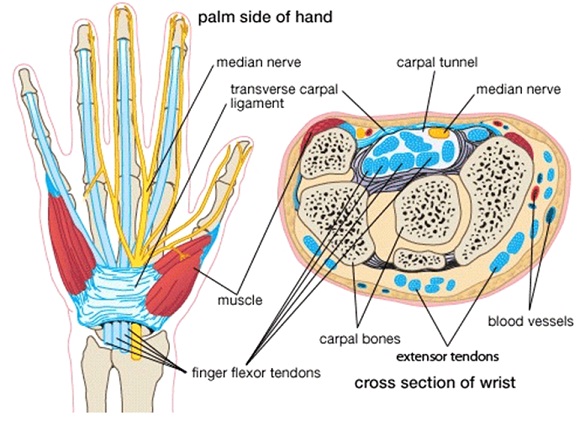Repetitive Motion Disorders Symptoms, Causes, Diagnosis and Treatment

What Is A Repetitive Motion Disorder ?
Repetitive motion disorders (RMDs) are known as the muscular conditions family that occurs from continuous motions performed in daily activities. The RMDs family consists of bursitis, carpal tunnel syndrome, epicondylitis, ganglion, tendonitis cyst, trigger finger and tenosynovitis. There are different causes of RMDs like uninterrupted recurrences of a motion or activity, awkward or unnatural motions for example wrist or arm twisting, over-exertion, inappropriate posture, or fatigue. Most commonly RMDs occur in the wrists, hands, shoulders and elbows, however can also occur in the back, neck, ankles, knees, legs, feet, and hips. The disorders are characterized by pain, tingling, numbness, visible redness or swelling of the affected region. For few sufferers, there is no visible injury sign, even though they may locate it difficult to perform simple actions.
What Are Symptoms Of Repetitive Motion Disorders ?
The symptoms of such disorders include:
- Stiffness or Pain in the hands, fingers, forearms, wrists, shoulders, elbows, back or neck.
- Tingling or numbness in the hands or fingers.
- Visible redness or swelling of the affected region.
- There will be no strength and flexibility.
What Are The Causes Of Repetitive Motion Disorders ?
A person who is suffering from repetitive or random activities can attain repetitive motion disorders. Several activities and professions enhance the risk, comprising of:
- Association line work.
- Sewing
- Meatpacking
- increased computer working/typing
- Gardening
- Carpentry
- Sports for example golf or tennis
- Lifting babies
How Is Repetitive Motion Disorders Diagnosis ?
The repetitive motion disorder diagnosis starts with taking the history of a patient like its occupational history. The physician may ask regarding the specific symptoms in the affected region, mainly if the person suffers from diabetes, rheumatoid arthritis, or other disorders along with the limb or joint overuse. Moreover, physical exam is done for the affected area. The doctor will feel or press the painful area to find out whether there is pain or just swelling. Certain tests such as imaging, laboratory, EMG are performed too.
How Is Repetitive Motion Disorders Treatment ?
RMDs treatment usually consists of stopping or reducing the activities that produce symptoms. Options consist of taking certain breaks to rest, and accepting relaxation and stretching exercises. Our body needs rest so it is very important for you body parts to relax. It is also suggested to apply ice to the sore area and utilizing drugs like anti-inflammatory drugs, pain relievers, and cortisone. They can diminish swelling and pain. Bandages are also capable of getting rid of pressure on the nerves and muscles. Doctor may also suggest having a Physical therapy because it may help you to get rid of the pain and soreness in the joints and muscles. However, in very few serious cases, surgery may be mandatory to get rid of symptoms and avoid permanent damage. Some managers have established ergonomic packages to assist workers correct their working pace and arrange office equipments to diminish problems. The most important thing is to keep yourself relaxed and calm.
By : Natural Health News




